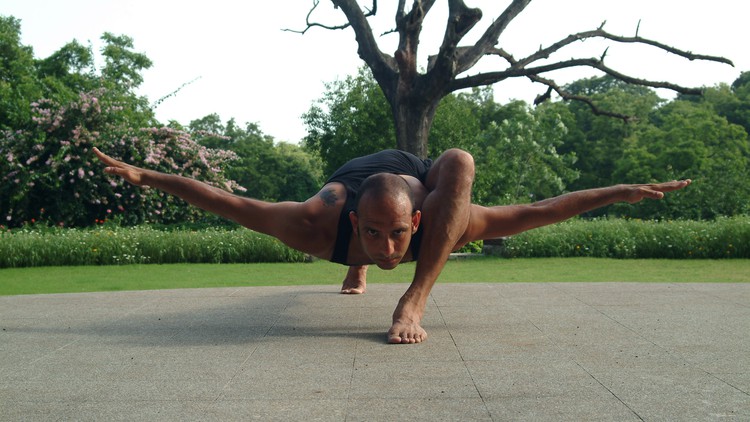
60 classes x 60 minutes. Strengthen, Stretch, Breathe and Relax.
What you will learn
The physical aspect of Yoga, to practice anywhere, with an experienced teacher to guide you.
A regular practice consisting of 60 unique hour-long sequences using traditional asana(postures).
Basic, as well as intermediate postures suitable for most regular practitioners.
Different variations of the Surya-namaskaar (sun-salutations).
Increase mobility and functional strength without excessive muscular strain or focus on hyper-flexibility.
Breathe well, move well, and feel well, thereby reducing stress and inducing well-being.
A safe, healthy increase of the range of motion of the limbs as well as core strength.
No music, no fluffy language, or any other bells and whistles – just Yoga – Unplugged!
Taking the practice further from Hatha Yoga Unplugged – Series 1.
Description
While the physical practice of Yoga asana is just the tip of the iceberg, for most people it is the most accessible way to prepare the body and mind for the other, deeper aspects of Yoga.
This course contains 60 hour-long yoga classes divided into two methods of practice :
- Hatha Yoga ( 40 classes) – Traditional classes with longer holds in the asana. Great for building awareness in the posture and working on the alignment.
- Dynamic Hatha Yoga (20 classes) – dynamic sessions that are faster in pace, great for muscle tone and the cardio-vascular system.
The combination of these two methods is perfect for guiding the student forward and encouraging a safe, regular practice.
Students are encouraged to repeat each class twice before proceeding to the next. While the suggested frequency of practice is 3-4 times a week for maximum benefit, a minimum of two classes a week is recommended.
However, the intensity of practice is entirely dependent upon the the practitioner. The asana are healing for body and mind only if the principle of non-violence towards one’s self is adhered to. Never force the body to stretch to the point of strain, keep the breath calm and come out of a posture if tired. Use props such as the wall, yoga blocks and belts .
All classes are devoid of any background music helping to create a silent focus on the breath and the postures.
Content